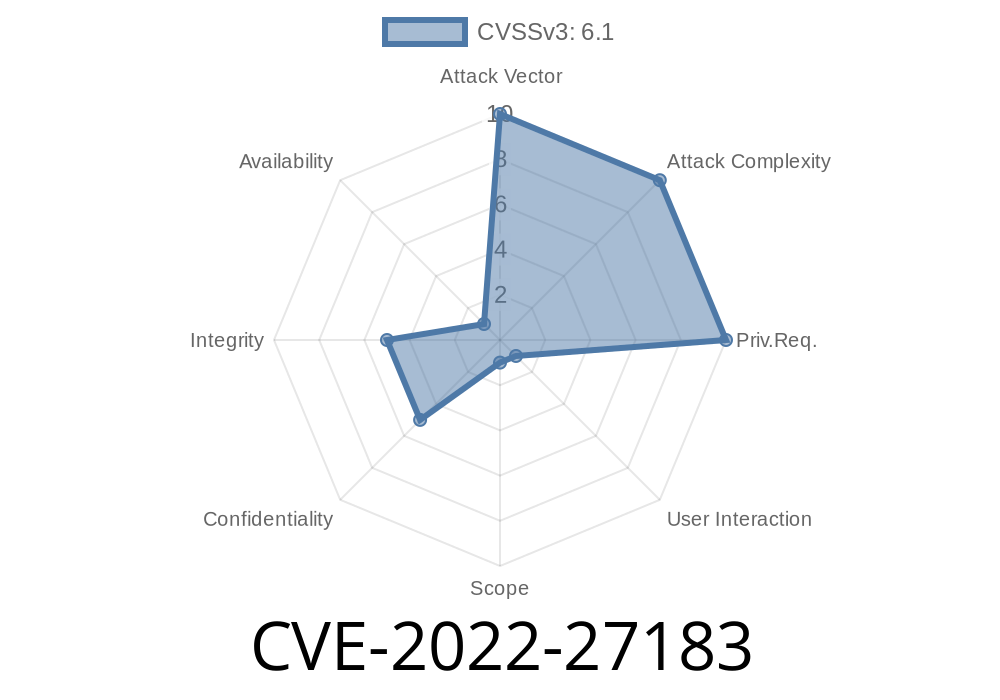Recently, a critical security vulnerability has been identified in the Monitoring Console app of Splunk Enterprise, assigned with the CVE number CVE-2022-27183. This post will provide an in-depth analysis of the vulnerability, its exploitation details, and recommended mitigation steps. The vulnerability is a Reflected Cross-Site Scripting (XSS) that affects only the distributed mode configuration of the Monitoring Console app in Splunk Enterprise versions before 8.1.4.
Vulnerability Details: Reflected XSS
Reflected XSS is a type of vulnerability that allows an attacker to inject malicious scripts into a web application through vulnerable query parameters. When a victim visits the crafted URL, the malicious script gets executed within the victim's browser, leading to a range of possible attacks, including stealing session cookies, redirecting to malicious websites, or performing actions on behalf of the victim.
Affected Component: Monitoring Console App in Distributed Mode
The Monitoring Console app is a bundled app that comes with Splunk Enterprise, and it is not available for download on SplunkBase. Also, it is not installed on Splunk Cloud Platform instances. This vulnerability specifically affects instances of the Monitoring Console app configured in distributed mode.
Exploit Details
The vulnerability resides in a query parameter that allows the injection of malicious payloads. Below is an example of a simple payload that demonstrates the issue:
http://<splunk_domain>:<port>/app/splunk_monitoring_console/monitoringconsole?q=<script>alert('XSS')</script>;
In the example, when a user visits the crafted URL, the script alert('XSS') gets executed within the user's browser. This JavaScript snippet will display a browser alert box as a proof of concept to demonstrate the successful exploitation of the vulnerability.
Original References
1. Splunk Security Advisory: https://www.splunk.com/en_us/security-advisories.html
2. Splunk Documentation on Monitoring Console in Distributed Mode: https://docs.splunk.com/Documentation/Splunk/latest/DMC/DMCoverview
Upgrade Splunk Enterprise to version 8.1.4 or later, as the issue is fixed in these versions.
Download Link: https://www.splunk.com/en_us/download/splunk-enterprise.html
2. If you cannot upgrade immediately, you should implement strong content security policies and input validation measures to prevent the execution of malicious scripts within your environment.
3. Periodically check Splunk's official security advisories to stay informed about potential vulnerabilities and follow recommended best practices.
Wrapping Up
In conclusion, CVE-2022-27183 is a critical Reflected XSS vulnerability that impacts Splunk Enterprise's Monitoring Console app configured in distributed mode. Like any other web application, Splunk deployments should be routinely reviewed for security vulnerabilities and best practices should be followed to ensure a secure environment. Lastly, keep your Splunk Enterprise updated to the latest version to protect it against emerging threats like this one.
Timeline
Published on: 05/06/2022 17:15:00 UTC
Last modified on: 05/14/2022 02:25:00 UTC
